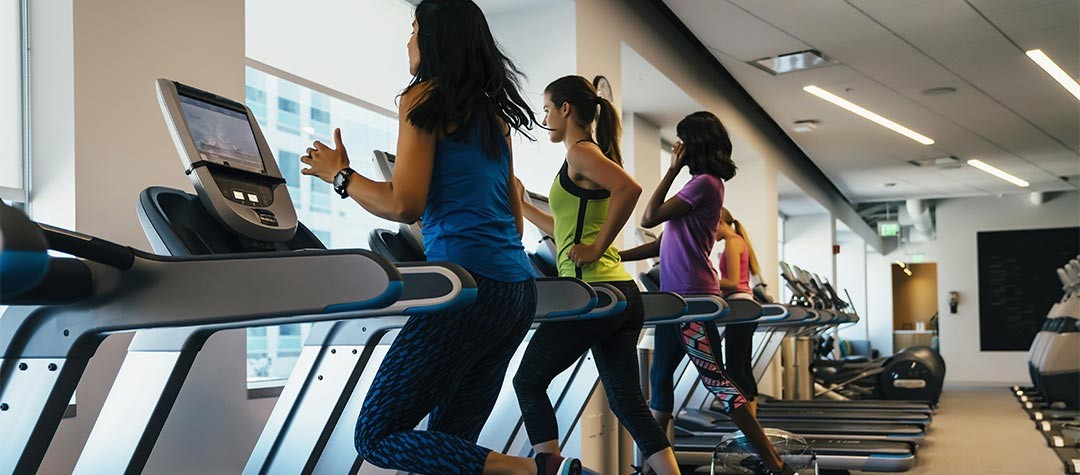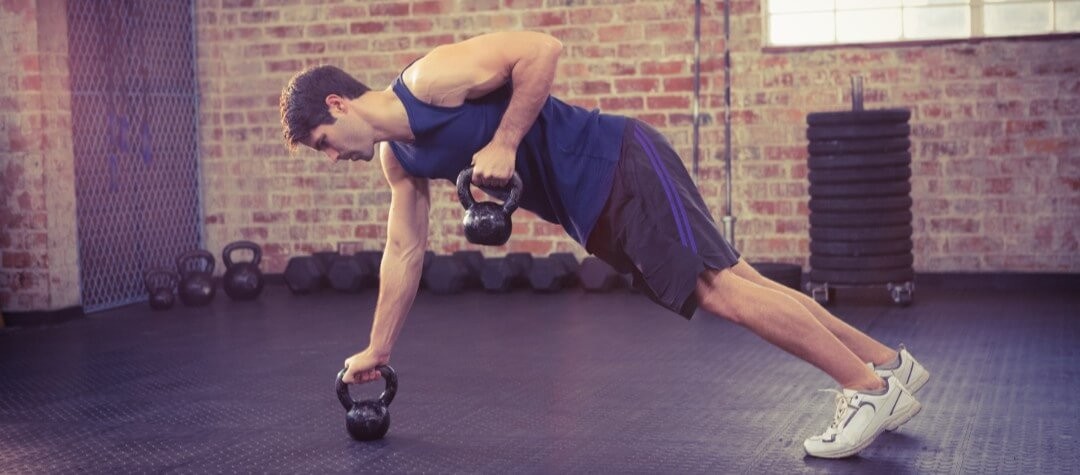The treadmill offers a fantastic solution to maintaining your cardiovascular training throughout the year whatever the weather. Here's your guide to training successfully on a treadmill.
Although exercising on a treadmill can be perceived as dull, most treadmills now offer a fantastic variety of different functions and programs to develop your exercise workouts. Treadmill features include some of the following:
- Variable speed and gradient
- Pre-set training programs
- Integrated cooling fans
- Heart rate monitoring
- Fitness tests
Also, some models now boast individual television monitors so you can watch your favourite show while you workout. So now your sessions need never be boring because in addition to the new hi-tech facilities, there are also a multitude of available training options including:
- Steady paced sessions
- Hill training
- Fartlek workouts (Fartlek is a Swedish word, meaning speed play)
- Interval speed sessions
- Precise, even paced runs
Safety first before exercising on a treadmill
Treadmill training is a safe activity but a brief lapse in concentration can cause a mishap, so follow the checklist below before you begin:
- Emergency stop. Many models of treadmill have a safety cord which you can clip onto your clothing. The opposite end of the cord is attached to the emergency stop button and will shut down the machine if you move too far away from the front. Simply clip it onto your clothing at the start of your session.
- Stop and start. Never get on or off a treadmill when the belt is moving. Always wait for the belt to come to a halt before dismounting and similarly, never jump onto a moving treadmill.
- Keep in control of your exercise. For a smooth running action, run in the middle of the belt, rather than at the front by the control console. However, always make sure that you can reach the controls without difficulty.
- Keep your exercise focus. Walking, jogging and running are all great ways to unwind but unlike training outdoors, you still need to maintain your concentration so that you don’t slip. If you enjoy listening to your favourite sounds whilst you train, make sure you don’t get lost in the music!
- Know your running pace. Speed sessions on a treadmill can be very effective but make sure that the speed you key in is within your capabilities for the duration of your session, so that you don’t risk coming off the back.
How effective is treadmill training
In 1985, during her build-up to the London Marathon, the Norwegian runner Ingrid Kristensen rarely trained outdoors. The volume of snow and sub zero temperatures that characterise Norway’s winters made it impossible for her to run on the roads so she completed much of her training on a treadmill in her home. Clearly her training was very effective because she completed the course in a then world record time of two hours, 21 minutes and six seconds.
Monitoring your treadmill running
When you train outdoors, apart from the occasional glance in a shop window to see how you’re running, you have very little opportunity to monitor and improve on your technique. However, with a treadmill next to a mirror, you can continually monitor your gait, posture, tension, stride length and knee lift - indeed every movement you make.
Power walking, jogging and running are all simple activities but it is no coincidence that elite runners spend many hours practicing to run smoothly - and also run very fast. By focusing on one particular area at a time, for example, arm carriage or overall posture, you can train your mind and body to run more efficiently.
Efficient running technique is known as good ‘running economy’, i.e. running with a minimum of unnecessary movement so that you save energy, and because you are efficient, run faster. Try the following form tutor session to work on improving your running economy.
Session ideas for the treadmill
Most models of treadmill have a few pre-set programs so that you get some variety in your training but to really spice up your workouts, try some of the session ideas below. For each session, always begin with a warm-up of at least five minutes at a slower pace than your main session and end with a similar cool-down at an easy pace to bring your heart-rate , blood pressure and temperature gently back to pre-exercise levels.
| Session type | Description | Benefits | Training tips |
| Go slow | A slow, easy paced session, suitable for a warm-up or cool-down. | Safely introduce the body to training (warm-up) or acts as a recovery from your main session (cool-down). | Avoid overdoing it in either your warm-up or cool-down and save your effort for your main session. |
| Up and down | Keep the speed constant but vary the gradient every 3 or 4 minutes. Finish with a few minutes at 0 per cent incline. | Builds leg strength on the hills and allows recovery during the ‘down’ periods. | Some treadmills will operate at a negative gradient, e.g. minus 1 per cent, which equates to running downhill. Downhill running is great for leg speed so include it in your workout. |
| Form tutor | Select a treadmill that faces a mirror and starting slowly, gradually increase your speed until you’re running fast. Focus on running efficiently throughout. | Teaches your body how to run without wasting effort and energy. By facing a mirror, you can closely monitor your style as you run faster. | Look for elbows that start to move out as you speed up and tension creeping in around your neck and shoulders — which all make you less efficient — and slower. |
| Session type | Description | Benefits | Training tips |
| Fartlek | A ‘go as you please’ session, where you vary your pace according to how you feel, not trying to hit specific speed targets. | Less structured than a session where you have defined effort and recovery times, which means you run as you feel and don’t risk overdoing it. | If you’re running to music, try experimenting with changing the pace when a new track comes on or perhaps speed up on a chorus. |
| Intervals | A structured session, where you run at a specific speed for a specific time, with specific timed recoveries. | Great for even paced training; ideal practice for races. |
This can be a challenging session, so try disconnecting the music and instead focus on keeping a smooth running style so that your running is efficient. |
| LSD | Short for L ong, S low, D istance; where you run steadily, at the same pace for longer periods. | Great for building basic stamina. | If you’re planning on training for more than 30 minutes, stick some music on and the time will just fly. |
So, treadmill training offers a safe, traffic-free, weather independent option to bring further variety to your cardiovascular sessions, combined with audio and visual options which should ensure that your workouts never stagnate. Whether you’re fitness walking, jogging or training for a race, there’s a treadmill session for you that will both maintain your interest and progress your fitness.














